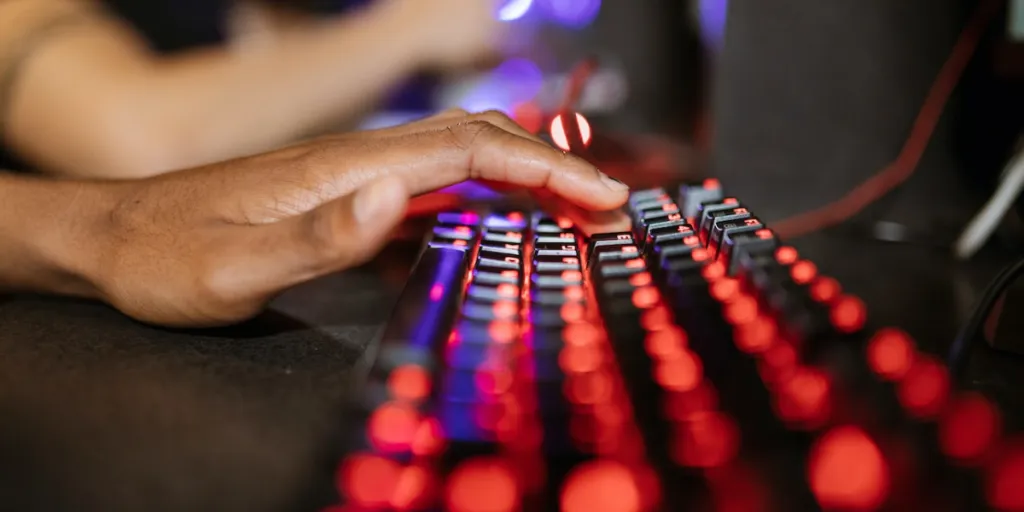Once reserved for the niche of avid typists and gamers, mechanical keyboards have stormed the mainstream. Their satisfying clickety-clack and customizable switches have captivated a diverse audience, from writers seeking the perfect keystroke to gamers chasing that competitive edge.
For retailers, this growing fascination with mechanical keyboards presents an incredible opportunity. Whether you’re an established electronics store or an entrepreneurial e-commerce venture, the world of mechanical keyboards beckons with promise. But diving into this market requires more than just stocking shelves—it demands a nuanced understanding of the product, market dynamics, and a strategic approach to stand out in a competitive landscape.
So read on for all you need to know about mechanical keyboards and how to ensure you appeal to this growing market by stocking the right products and accessories in 2023!
Table of Contents
The market for mechanical keyboards
What are mechanical keyboards?
How does a mechanical keyboard work?
Building your mechanical keyboard inventory
Conclusion
The market for mechanical keyboards
Many PC gamers strongly prefer mechanical keyboards due to their tactile responsiveness, exceptional durability, and rapid key actuation. When a key is pressed, you feel the satisfying tactile feedback and hear a distinctive ‘click,’ signaling that the keypress has been successfully registered.
As of the beginning of 2022, the global gaming community boasted a staggering 2.8 billion active gamers, and projections by Techjury anticipate this number to soar beyond 3 billion by the end of 2023. Among these gaming enthusiasts, a substantial 1.8 billion are PC gamers, opting for the flexibility and customization opportunities offered by gaming on a personal computer.
This trend towards customization extends to mechanical keyboards, as evident in the thriving communities on platforms like Reddit. The mechanical keyboard community on Reddit, boasting 1.1 million members, showcases the fervor for these customizable input devices.

What are mechanical keyboards?
Mechanical keyboards are a type of computer keyboard known for their distinctive key switches, which use individual mechanical mechanisms for each key. Unlike traditional membrane keyboards that rely on rubber dome switches, mechanical keyboards have discrete switches beneath each keycap. These switches provide tactile and auditory feedback, offering a unique typing experience.
How does a mechanical keyboard work?
A mechanical keyboard operates by utilizing individual mechanical switches positioned beneath each keycap. These switches are the core components that distinguish mechanical keyboards from their membrane counterparts.
When a key is pressed, the stem of the keycap depresses the mechanical switch underneath it. These switches come in a variety of types, each offering unique characteristics such as actuation force, tactile feedback, and noise level.
The keypress is registered when the switch’s actuation force threshold is reached, creating an electrical circuit that sends a signal to the keyboard’s controller. Tactile feedback is often a notable feature, as many mechanical switches provide a pronounced bump or resistance at the actuation point, allowing typists to feel when a keypress has been successfully registered. Additionally, some mechanical switches emit an audible “click” sound upon actuation, appealing to those who enjoy auditory feedback during typing.
The keyboard’s controller then translates these keypress signals into digital codes, which are subsequently relayed to the connected computer or device. This digital code represents the specific key that was pressed, enabling the computer’s operating system or software to execute the corresponding actions, such as displaying characters on the screen or performing keyboard shortcuts.
Mechanical keyboards are favored for their precision, durability, and distinct typing experience.
Building your mechanical keyboard inventory
Businesses need to know a few things about mechanical keyboards before making a purchase to ensure they have a diverse product range that appeals to most consumers.
Types of key switches
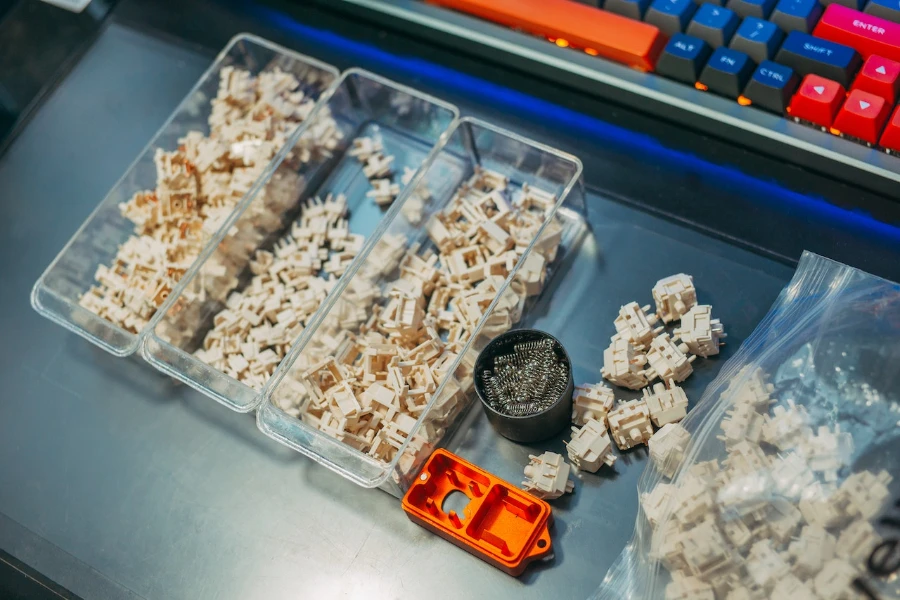
There are three types of mechanical key switches on the market: linear, tactile, and clicky, which differ based on a few factors.
- Linear switches lack the tactile bump and audible click. They offer a smooth and consistent keystroke without any resistance or feedback. These switches are popular among gamers due to their rapid actuation and lack of distractions.
- Tactile switches offer a tactile bump without the loud click sound. They provide a more subtle and quieter typing experience than clicky switches while offering tactile feedback.
- Clicky switches provide a noticeable tactile bump and an audible click sound when reaching the actuation point. This feedback is appreciated by typists who enjoy the auditory and tactile response, but it can be noisy in shared spaces.
According to Google Ads, tactile switches are the most popular, with more than 22,000 monthly searches compared to less than 10,000 for linear switches and less than 4,000 for clicky switches.
What do switch colors mean?
Cherry MX started the trend of naming different switches by color based on switch type, actuation differences and how heavy the springs are.
| Switch Color | Description |
| Red | Linear switch with light resistance |
| Yellow | Linear switch with medium resistance |
| Black | Linear switch with heavy resistance |
| Brown | Tactile switch with medium resistance |
| Clear | Tactile switch with heavy resistance |
| Blue | Clicky switch with medium resistance |
| Green | Clicky switch with heavy resistance |
Mechanical switches exhibit several distinguishing characteristics:
- Actuation point: This denotes the precise moment when the key switch recognizes a key press, a metric measured in millimeters. It’s important to note that different switches may feature distinct actuation points.
- Actuation force: Measured in grams, actuation force signifies the pressure required to activate a keypress successfully. Higher actuation force necessitates more significant keypress pressure, while lower values allow lighter typing.
- Key travel: This metric represents the complete distance a key traverses before reaching the fully pressed or bottomed-out position. Typically set at 4mm, some mechanical switches offer reduced travel distances, enhancing typing efficiency.
The choice of key switch is highly subjective and depends on individual preferences, typing style, and intended use. Typists who enjoy more pronounced feedback may prefer clicky or tactile switches, while those who want a smoother, quieter typing experience may opt for linear switches.
Gamers often prefer switches with low actuation forces for quick response times.
Types of keycaps

Keycaps are the plastic piece that goes on top of the mechanical key switch and are another essential component of a mechanical keyboard. They’re easy to remove and come in various materials, profiles, and designs that can impact the typing experience and aesthetics. They also come in multiple fonts, which can be translucent or opaque.
Keycaps for mechanical keyboards are typically crafted from two primary materials:
- ABS (Acrylonitrile Butadiene Styrene) is the more prevalent choice, while there is also the increasingly popular PBT (Polybutylene Terephthalate). ABS keycaps boast a broader spectrum of available colors, crisper letter printing, and a more uniform appearance with straighter lines.
- PBT keycaps exhibit a slightly textured surface, known for their resilience to wear and tear. They are also renowned for producing a deeper and more resonant auditory profile, making them particularly suitable for unconventional artisanal designs and enthusiasts seeking a unique typing experience.
Size and layout
Mechanical keyboards come in various sizes and layouts to cater to consumer preferences and use cases. Each size and layout has advantages, making them suitable for specific types of consumers.
Here are some standard sizes and layouts of mechanical keyboards and the types of consumers they appeal to:
Full-size keyboards
- Layout: Standard keyboard layout with a numeric keypad.
- Appeals to: General users, office workers, data entry professionals, and gamers who need a numeric keypad for calculations or data input.
Tenkeyless (TKL) keyboards
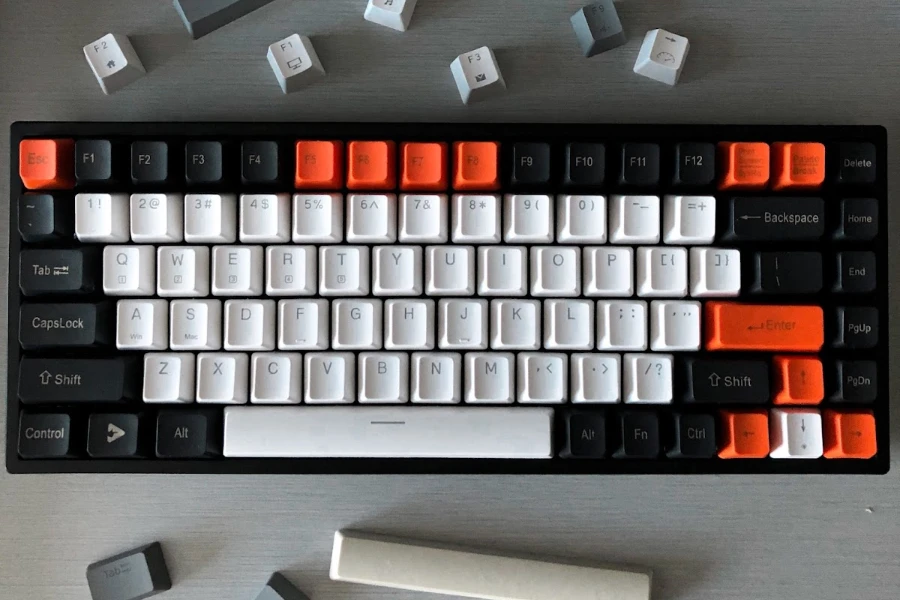
- Layout: Compact layout without the numeric keypad, featuring the main keyboard area only.
- Appeals to: Gamers, programmers, and typists who want a more compact and portable keyboard without sacrificing the core typing experience. It frees up desk space for mouse movement.
Within the tenkeyless keyboard category, there are also smaller variations, such as 75% and 60% keyboards. 75% keyboards are only slightly smaller, with the keys more cramped together and they may lack function row keys and navigation keys. 60% keyboards are even smaller, with everything to the right of the enter key on the traditional tenkeyless keyboard removed, as well as the function top row.
These smaller keyboards often appeal to travelers, enthusiasts who value portability, and those who prefer a minimalist and clutter-free desk setup. They’re often favored by programmers and writers who don’t require additional keys.
Split keyboards
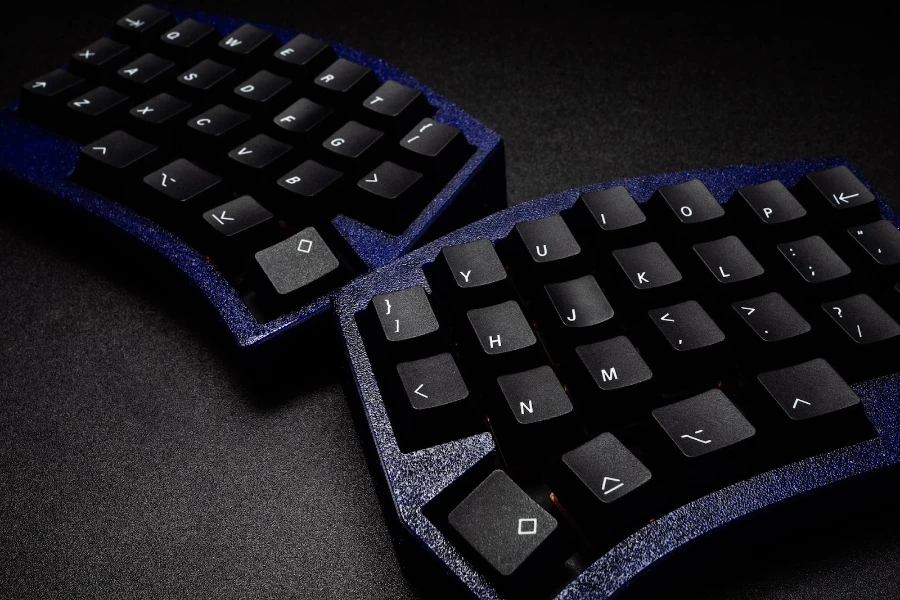
- Layout: Divided into two halves, users can position each half independently.
- Appeals to: Ergonomics-conscious users seeking a more natural hand position, programmers, and those with specific comfort requirements.
The keyboard size and layout choice largely depend on individual needs, preferences, and use cases. Gamers may prefer compact layouts for quick mouse movement, while office workers might favor full-size keyboards for productivity.
DIY kits for mechanical keyboards
Building a mechanical keyboard offers a blend of creativity, customization, and technical challenge that appeals to enthusiasts. It’s a hobby that allows individuals to craft a tool they use daily to their exact specifications while participating in a vibrant and welcoming community of fellow enthusiasts.
Carrying DIY mechanical keyboard kits and parts is a strategic move for tech retailers. It allows them to diversify their product range, engage with a passionate community, and offer customers opportunities for customization and personalization while fostering brand loyalty and growth.
Want to learn more about building mechanical keyboards and which products you need to carry to appeal to DIY enthusiasts? Read my DIY Guide to Custom Mechanical Keyboards.
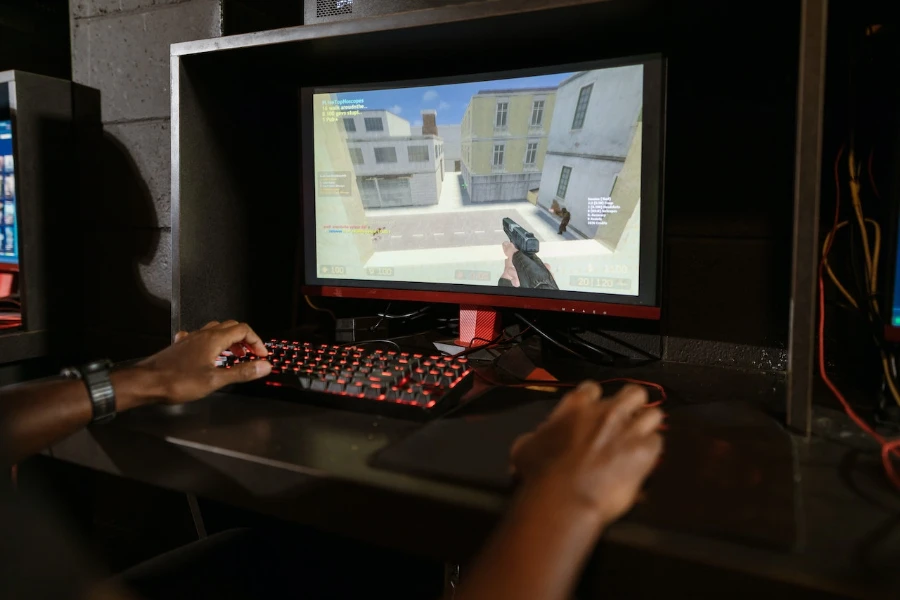
Conclusion
For businesses selling keyboards and other tech products, recognizing the appeal of mechanical keyboards to both beginners and enthusiasts presents a significant opportunity. The tactile feedback, durability, and personalized typing experiences offered by these keyboards are not just trends; they are the future of input technology.
Incorporating mechanical keyboards into your product offerings and providing guidance and support to beginners will enhance your product portfolio and foster trust and loyalty among your customer base. The mechanical keyboard remains a key player as technology evolves, bridging the gap between innovation and the ultimate typing experience.
